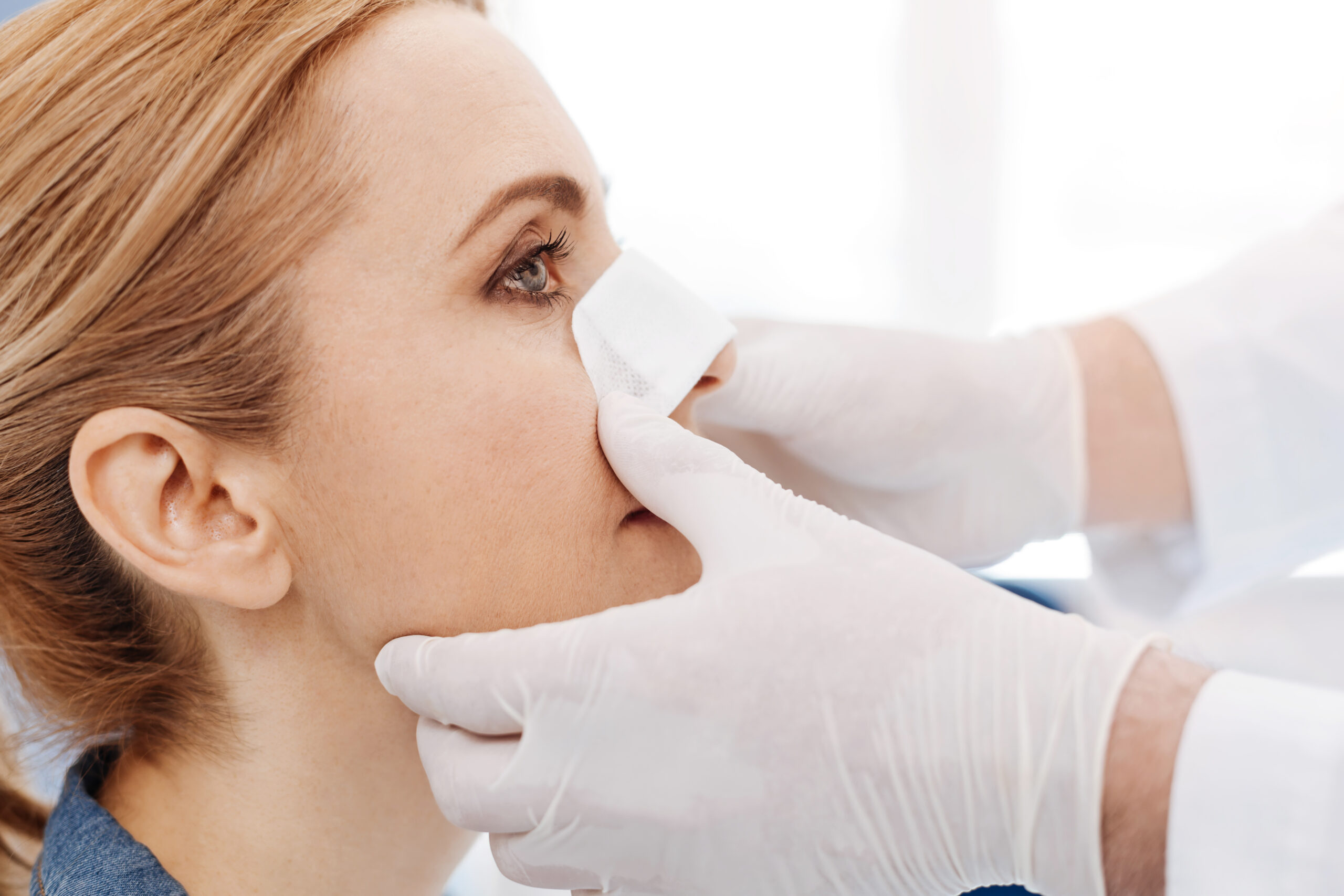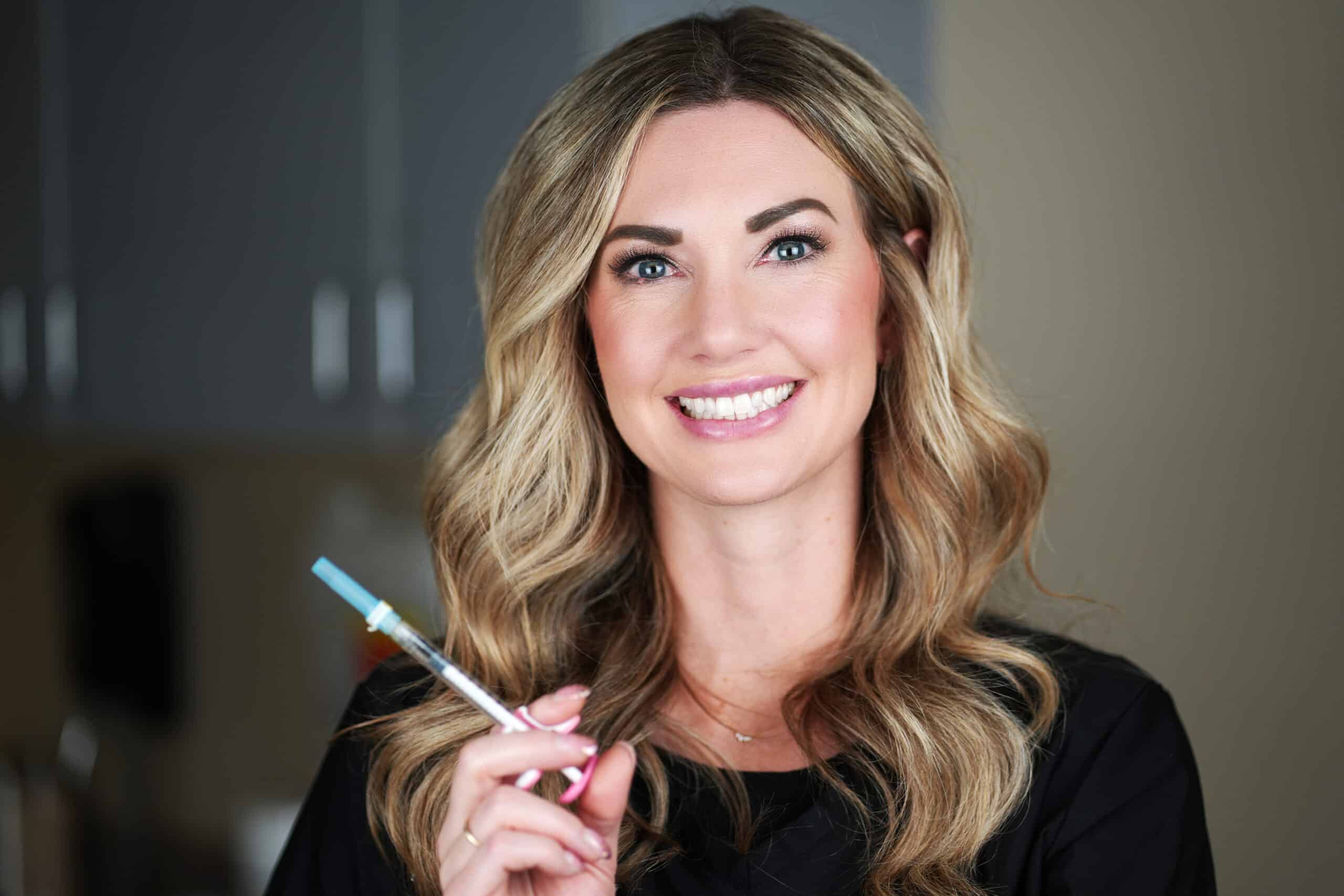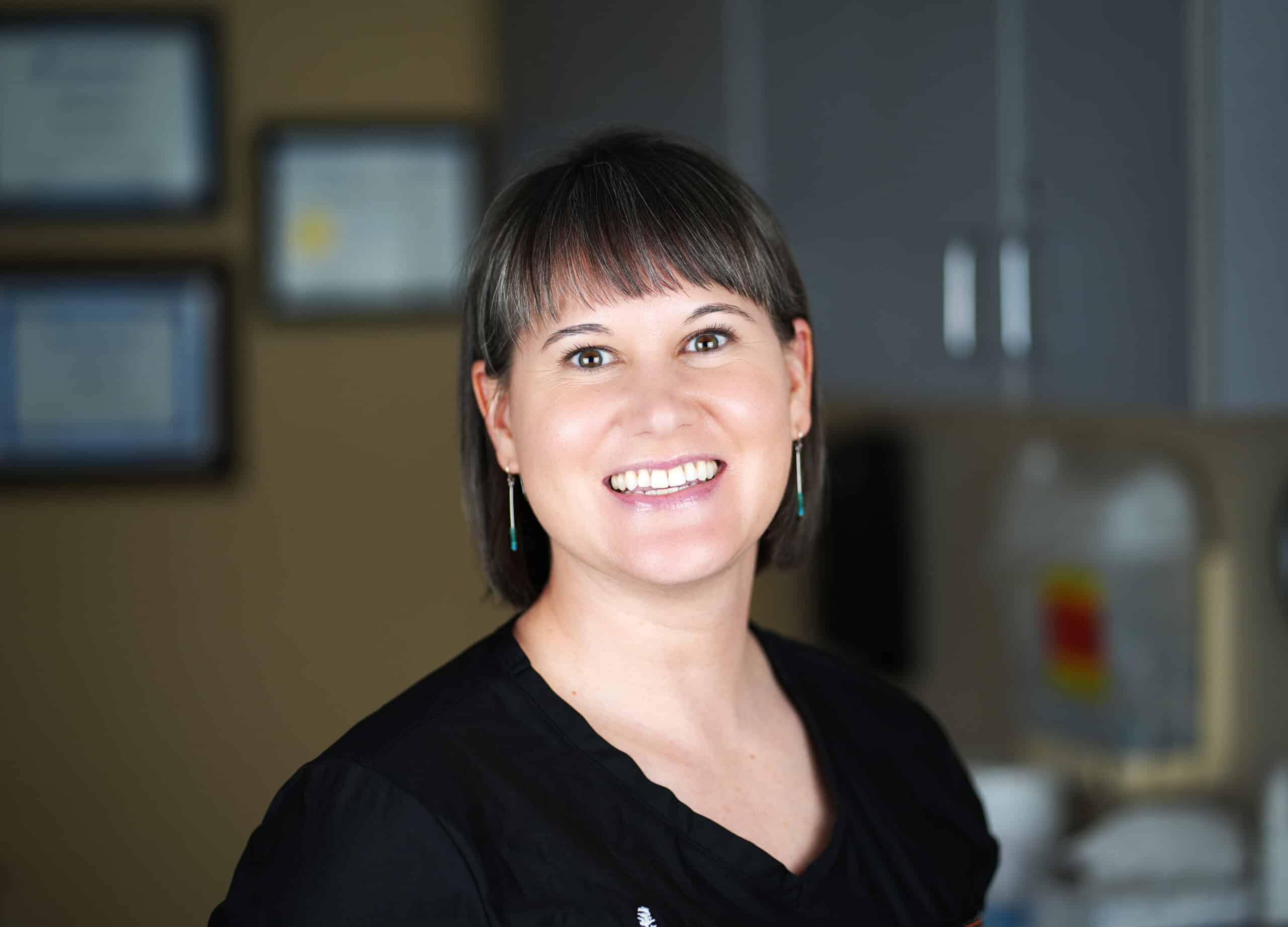
Skin cancer can occur on any part of the body exposed to the sun, and the nose is a common location for skin cancer due to its prominence and frequent sun exposure. In this article, we discuss how skin cancer lesions are reconstructed after Mohs surgery on the nose.
The nose is an extremely important structure – both aesthetically and functionally. Due to its prominent location on the face, the nose tends to get more ultraviolet radiation from sun exposure and is a common site for skin cancers.
Excising skin cancers on the nose takes special care to ensure the entire cancerous tumor is removed while keeping healthy surrounding tissues intact. Mohs micrographic surgery is one common method for excising skin cancers, particularly basal and squamous cell carcinomas.
At our plastic and reconstructive surgery practice in Arizona, we frequently treat patients with varying skin cancer diagnoses, including commonly reconstructing patients after Mohs procedures.
While we don’t offer Mohs surgery at our practice, we do offer excision with an examination of frozen sections of tissue allowing for the treatment of all types of skin cancers, including melanomas, in a single procedure. We also commonly treat Mohs surgery patients who want the best possible reconstruction of their skin cancer defects. Here’s an overview of what to expect from Mohs surgery on the nose, including reconstruction by a board-certified plastic surgeon.
What Is Mohs Surgery?
Named after Dr. Frederic Mohs who developed the technique in the 1930s, Mohs surgery is known for its high cure rates and ability to spare healthy tissue making it particularly suitable for treating skin cancers with a higher risk of recurrence, or those located in areas where tissue preservation is functionally or cosmetically important. As a result, Mohs surgery is often used to remove skin cancers on the face, genitalia, hands, feet, and ankles.
During a Mohs procedure, dermatopathologists take care to minimize the size of the defect while ensuring all of the cancer cells are precisely removed. They do this by carefully excising the skin cancer layer by layer, and immediately examining the tissue under a microscope on-site during surgery. This allows them to accurately determine when the entire cancerous lesion is gone with a high level of precision.
Clinical Success of Mohs Surgeries in Treating Skin Cancers
Mohs surgery has a 99% five-year cure rate for primary basal cell carcinomas, and 92-99% for squamous cell carcinomas. Frozen section resection can also be performed, but is roughly 95% accurate for removing skin cancers.
Common Skin Cancers of the Nose
Basal cell carcinoma is the most common type of skin cancer and typically appears as a raised, pearly bump on the skin. Roughly 80% of all basal cell carcinomas occur on the face, and of these tumors around a third of them are found on the nose where they are considered higher risk.
Squamous cell carcinoma is less common than basal cell carcinoma but more likely to spread if left untreated. These lesions often appear as a red, scaly patch or a firm, raised bump.
Melanoma, although less common than basal cell and squamous cell carcinomas, is the most aggressive and potentially life-threatening form of skin cancer. Melanomas can develop on any part of the body, including the nose, and often appears as a new mole or an existing mole that changes in size, shape, or color. Learn more about what skin cancers look like in our recent article by Dr. Cripe. Mohs surgery is less commonly used to remove melanomas because the turnaround time to examine melanoma tissues takes longer.
Mohs Surgery on the Nose: What to Expect
One of the significant advantages of Mohs surgery is its ability to spare healthy tissue. By precisely removing only cancerous cells while preserving healthy tissue, Mohs surgery aims to minimize scarring and functional impairment, particularly in cosmetically sensitive areas such as the face, including the nose.
When removing skin cancers from the nose, it’s crucial to properly identify tumor margins. It’s estimated that a third of all incomplete basal cell carcinoma incisions are found on the nose, in part due to the anatomical complexity of nasal tissues compared to other parts of the body.
Here’s what you can expect from your Mohs surgery on the nose:
Anesthesia
Mohs excision is typically performed under a local anesthesia with numbing injections around the excision site. The reconstruction of Mohs defects may be performed under local anesthesia, IV sedation, or general anesthesia, depending on the size and location of the defect.
Tumor Removal and Tissue Examination
After you’re prepped for surgery, your Mohs surgeon will mark the perimeter of the lesion and begin removing the tumor. They start conservatively and remove a thin layer of tissue from the lesion and its margins. Then they stain and examine the tissue sample under a microscope during the surgery. If they find abnormal cells in the first specimen, they will excise another thin layer of tissue based on the precise location of the remaining cancer cells. This process is repeated until the entire lesion is removed with negative margins while sparing as much healthy tissue on the nose as possible.
Mohs Reconstruction on the Nose
After the cancer is completely removed by a dermatopathologist, then we’ll typically reconstruct the defect.
Depending on the size and location of the defect, various closure techniques may be used to achieve optimal functional and cosmetic results. We tailor each Mohs reconstruction procedure to the individual patient and will evaluate anatomy, aesthetic goals, defect location and size, and functional considerations to determine the most suitable reconstructive technique. Whenever possible, we hide incision lines in the relaxed skin tension lines around the surgical site to conceal scars.
Mohs reconstruction surgical techniques typically entail:
Primary Closure
Directly suturing the wound edges together to close the defect. This technique is used for minor defects that can be adequately closed, typically for small tissue defects located at the nasal root where the skin is mobile, or in the medial part of the nasal bridge.
Grafting
Transferring healthy skin from another area of the body to the nose to cover the defect. Aesthetically, grafts are less preferred for nose defects than local flaps because pigmentary changes, skin dryness, and depressions are more common, but if the Mohs surgery defect is particularly large then skin grafting may be the best option. We harvest donor skin from a site that matches the color of the nose skin, trim subcutaneous fat tissue, and then anchor the graft at the recipient site. After skin grafting it can take several weeks for the graft to “blend in” and stabilize.
Local Flaps
Moving nearby healthy tissue to cover the defect. There are several types of local flaps commonly used to reconstruct Mohs surgical defects on the nose. The choice of flap technique depends on factors such as the size and location of the defect, the availability of adjacent healthy tissue, and the patient’s circumstances. There are many different types of local flaps, including:
- Nasal dorsal advancement flap
- Bilobed Flap
- Rhomboid Flap
- Nasolabial Flap
- Glabellar Flap
- Paramedian Forehead Flap
- Second Intention Healing
Leaving the wound open to heal naturally without surgical closure. This approach is typically reserved for larger, deeper, or contaminated wounds that cannot be easily closed. During second intention healing, the body initiates an inflammatory response to remove debris from the wound, before granulation tissue composed of connective tissue cells and microscopic blood vessels fills the wound bed and builds a foundation for the formation of new, healthy tissue. Epithelial cells then migrate to the wound edges and begin to cover the granulation tissue. As the wound re-epithelializes and the tissue remodels, the wound gradually contracts and closes itself over time. Second intention healing generally requires proper wound care and regular dressing changes to keep the area clean.
Mohs Surgery on the Nose FAQ
Is the surgery painful?
The nose can be a sensitive area to administer local anesthesia, but once the numbing medication is in place the procedure itself is pain-free. Many patients report mild to moderate pain after Mohs surgery and find relief from over-the-counter pain medications or a prescription from your Mohs surgeon..
Why is Mohs surgery commonly performed on the nose?
The nose is a prominent and cosmetically sensitive area that is highly susceptible to skin cancer due to its exposure to the sun’s rays. Mohs surgery is often preferred for nasal skin cancer because it offers a high cure rate while minimizing the removal of healthy tissue and preserving the natural appearance of the nose.
Will there be scarring after Mohs surgery on the nose?
Mohs surgery aims to minimize scarring and preserve the natural appearance of the nose as much as possible, however, scarring occurs after any surgery. The size and location of the tumor, as well as individual healing factors, all influence the extent of scarring. Careful placement of incisions by your reconstructive surgeon, proper incision care, and laser skin resurfacing treatments can help minimize the appearance of scars.
What is the recovery process like after Mohs surgery on the nose?
The recovery process varies depending on the extent of the surgery, but most patients can expect some swelling, bruising, and tenderness in the treated area. A dressing or bandage is typically applied, which may need to be changed during the initial healing phase. It’s important to follow your dermatologist or plastic surgeon’s post-operative care instructions to maximize healing.
Book A Skin Cancer Consultation With A Plastic Surgeon
Do you have an unusual mole or spot that you’re concerned about? At Plastic Surgeons of Northern Arizona, we perform skin cancer and melanoma excisions, sentinel node biopsies, and Mohs surgery reconstruction to help minimize the appearance of scars while ensuring all cancerous cells are removed. Book a consultation at our clinic in Flagstaff, AZ with one of our qualified, board-certified plastic surgeons to learn more about your treatment options.
Medical Review: This procedural information has been medically reviewed by plastic and reconstructive surgeon, Brian A. Cripe, M.D.




